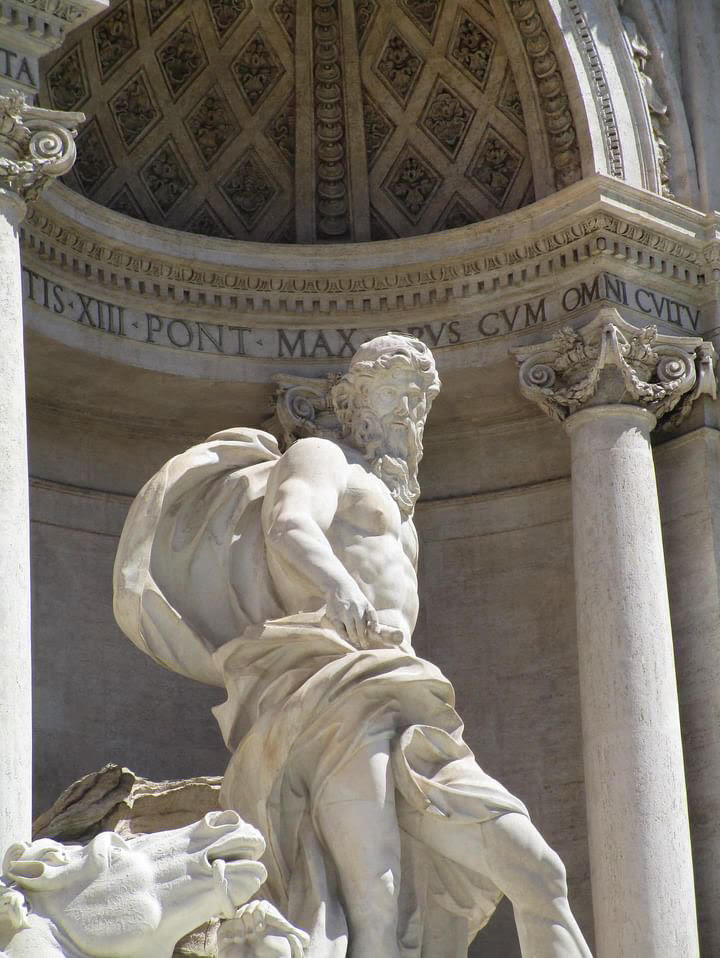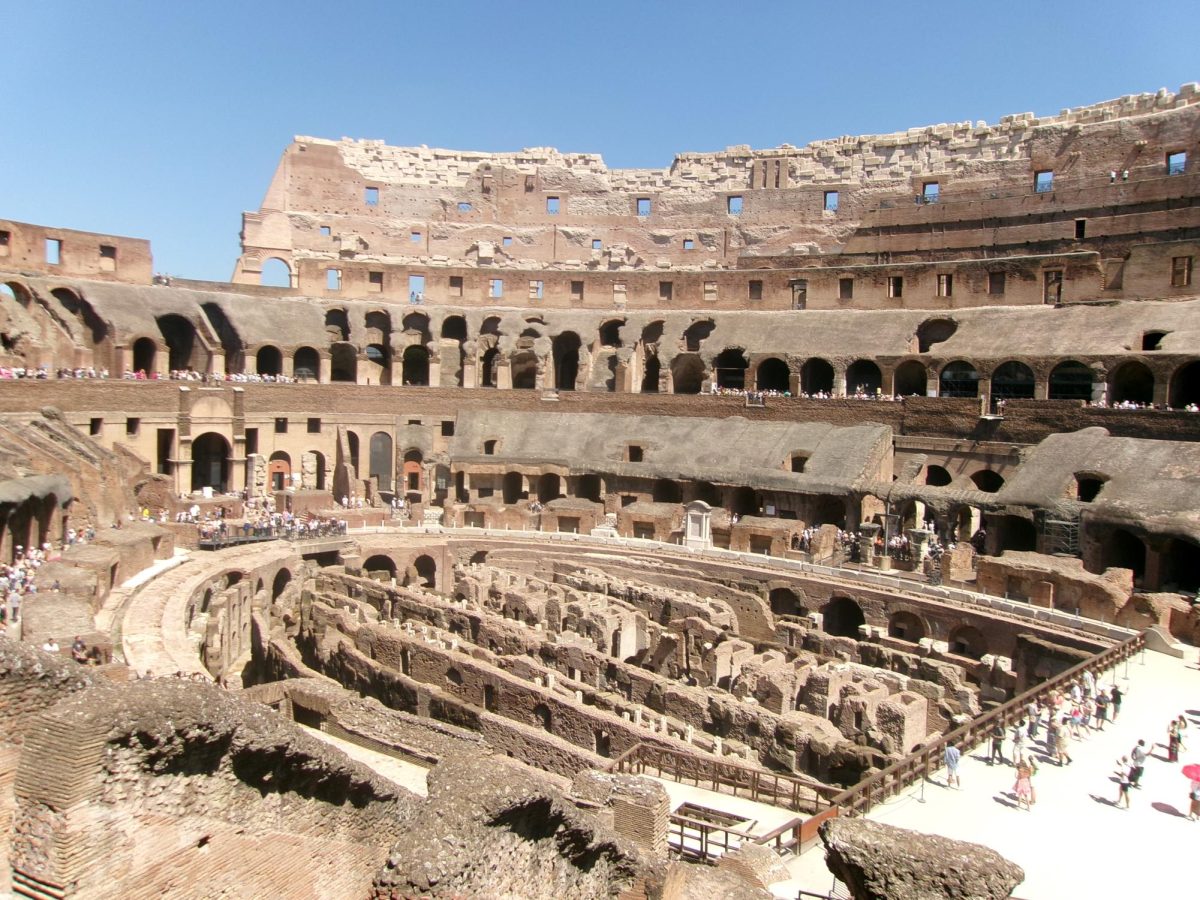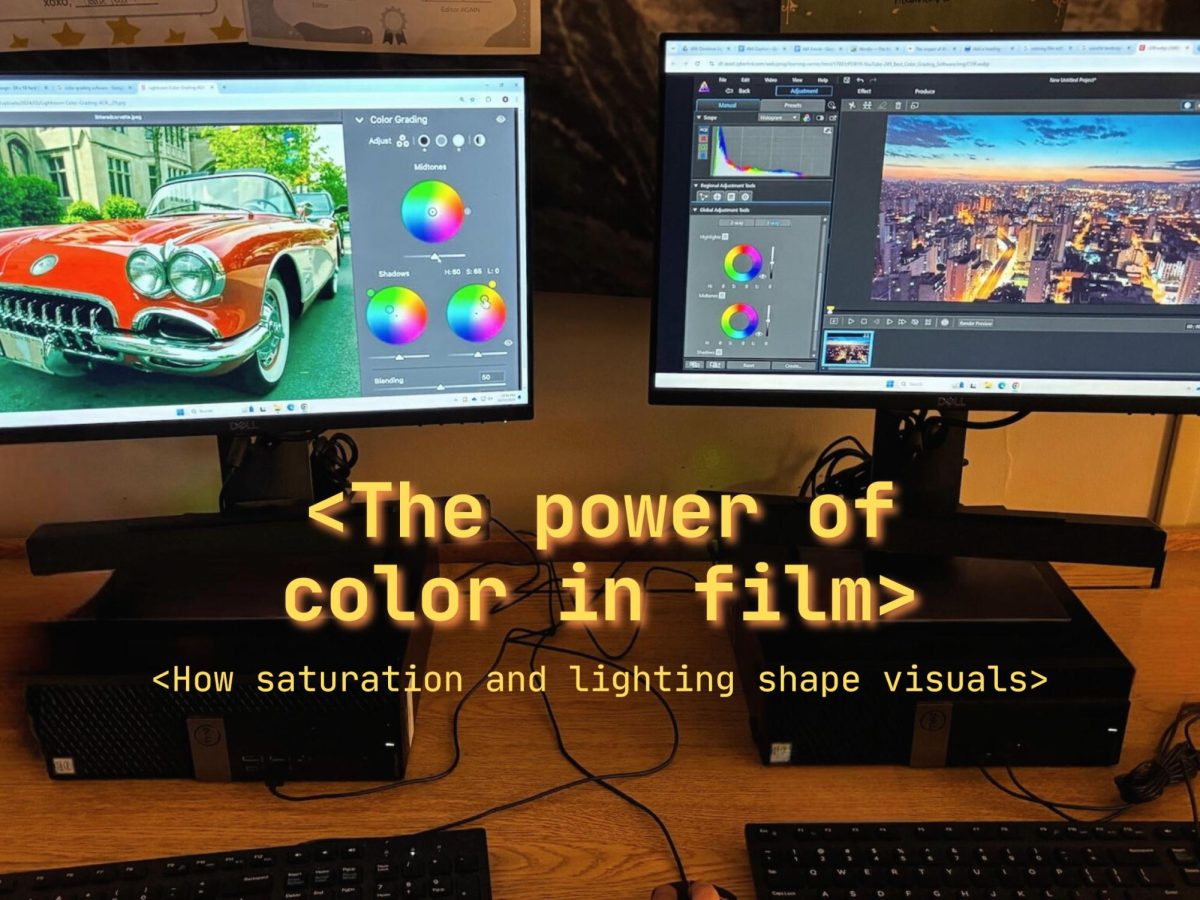As the fall solstice comes, the summer season begins to wrap up. Crowds of travel geeks head back home after memorable weeks living their European dream. Out of Europe’s 50 countries, Italy stood out as one of the main hotspots for the 2024 summer. NC magnet visited various destinations in the country, such as the Trevi Fountain, Roman Catacombs and the Roman Colosseum.
Trevi Fountain
Residing in Italy’s heartbeat, the city of Rome, the Trevi Fountain serves as a marvelous landmark for the tourist-filled city. Designed by Nicola Salvia and completed by Giuseppe Pannini during the mid-1700s, the Trevi Fountain captures Pietro Bracci’s depiction of Oceanus standing on top of a chariot, pulled by sea horses alongside tritons. The Trevi’s architecture stems from the Baroque era, providing scenes of mythological and allegorical figures throughout the monument.
Dating back to the fountain’s early years, Aqua Virgo supported various of Rome’s water sources which ancient Romans utilized within their day to day. Although the water no longer reaches potable status, the ancient aqueducts serve as a physical embodiment of the city’s ongoing legacy.
This past summer, NC magnet took in the Trevi Fountain during the annual junior trip for the class of 2025 as well as the 2024 Education First Tours (EF) summit trip. NC students created long-lasting memories alongside their closest friends, snapping pictures in front of one of Rome’s eternal beauties.
“The Trevi Fountain was gorgeous, from the color of the water to the architecture. I just loved it…I think the Trevi Fountain is so touristy because of the architecture and the significance [it] holds in history. [The fountain] is just so magnificent and extremely huge making it a symbol of Rome which makes many tourists want to visit,” magnet sophomore Luisa Wagner said.
Roman Catacombs
Near the outskirts of Rome, the Roman Catacombs symbolize another history-filled monument. Representing the spiritual lives of the early Christians, the Catacombs supply tourists with a glimpse into burial norms dating back to the fifth century B.C. While the Catacombs provide a different experience in comparison to Italy’s other treasures, the site showcases the resting places of early Christian communities.
The subterranean tunnels house thousands of deceased bodies across various locations around Rome. These tombs also became a congregational area for families to share funeral meals and mark death anniversaries. Throughout the Catacombs, early architectural structures, including skeletal remains and inscribed tablets, adorn the walls.
“The Catacombs were very memorable. I loved being able to see the history of my religion and the stories of the people who were laid to rest there. The stories embedded into these structures are extremely complex and interesting to learn. It was truly what fascinated me about this trip. Learning the rich history behind the places I’m walking through,” magnet senior Antonia Guerrero said.
While the Catacombs hide away from the city center because of their original purpose, the everyday traveler can now easily access the monuments. Due to the modernization of Rome, the ancient sanctuaries no longer house the remains of those buried there, but the underground passageways now serve as a learning environment.
Roman Colosseum
Built as early as 72 A.D., the Colosseum stands as one of the Seven Wonders of the world. The renowned amphitheater housed thousands of Romans in ancient times, presenting spectacles such as animal hunts and gladiatorial games. The Colosseum initially served for entertainment purposes under the Flavian dynasty, which eventually led to the creation of complex stage machinery for the audience’s visual benefit.
After four centuries of active use by the Romans, the Colosseum slowly grew neglected. The amphitheater lost the interest of the Romans due to the ending of gladiatorial combats and the various other grand public entertainments it provided. During this period, the structure suffered immense damage due to natural phenomena such as earthquakes and lightning. Over time, the arena lost its original marble detailing and other decorative elements. By the 20th century, the Colosseum underwent serious destruction, losing almost two-thirds of its original structure.
Nowadays, the ancient landmark attracts millions of visitors each year, remaining one of the most iconic amenities in Rome. Due to the high level of tourism, both NC magnet groups toured the Colosseum and learned about the rich history lying within the arena’s remains. Students used Whisper radios connected to their tour guides’ microphones as they journeyed.
“The Colosseum was amazing. I took Latin and so I had learned about it previously in class. Seeing it in real life in comparison to seeing a photo in class was amazing. And I think the architecture is definitely one of the main reasons for the tourism, it’s truly unlike anything I have ever seen. The detail is amazing,” Guerrero said.
These three monuments became highly recognized by a heap of communities as summer 2024’s Italian adventures came to a close. The Trevi Fountain, Roman Catacombs and the Roman Colosseum serve as historic masterpieces visited year-round, capturing memorable adventures.



















